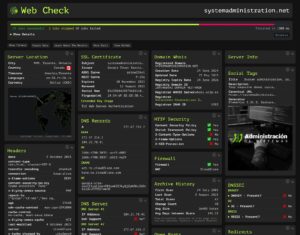Choosing the right disk provisioning strategy can significantly impact performance, storage efficiency, and data security in your virtualization environment.
When it comes to deploying virtual machines, how you allocate storage is a critical decision. There are two primary types of virtual disk provisioning: thick and thin. Each has its own strengths and trade-offs, and the choice depends on your infrastructure’s requirements, workload characteristics, and risk tolerance.
What is Thick Provisioning?
Thick provisioning pre-allocates the full amount of storage defined for a virtual disk at the time of its creation, consuming that space on the physical datastore immediately—regardless of whether it is used right away.
There are two subtypes:
- Lazy Zeroed: Fast to create, but the disk may contain residual data that is only overwritten (“zeroed”) upon first write, potentially causing performance penalties during initial use.
- Eager Zeroed: Slower to create because all blocks are zeroed up front, but delivers superior performance and enhanced security. It ensures that any previously stored data is completely wiped, which is ideal for sensitive environments or clustered systems requiring fault tolerance.
Security Note: Eager zeroing is preferred when data confidentiality is a concern, as it prevents data remnants from being recovered using forensic tools.
What is Thin Provisioning?
Thin provisioning allocates disk space on demand. Initially, only the space required to store actual data is used, and the virtual disk grows as more data is written.
For example, a 30 GB thin-provisioned disk that currently holds 10 GB of data will only consume 10 GB of physical storage. This allows for greater efficiency and flexibility, especially in environments with many virtual machines or limited storage capacity.
Benefits and Risks of Thin Provisioning
While thin provisioning helps maximize storage utilization, it introduces certain risks:
- Overprovisioning: Administrators may allocate more virtual disk space than physically available. If multiple VMs attempt to grow simultaneously and the datastore runs out of space, this can lead to critical failures across affected VMs.
- No automatic shrinkage: Deleting files from inside the VM doesn’t automatically reduce the VMDK file size. To reclaim space, you need to zero out unused blocks and run disk shrink operations using tools like
vmware-toolbox-cmd(Linux/Windows) orSDelete(Windows).
Key Comparison: Thick vs. Thin Provisioning
| Feature | Thick Provisioning | Thin Provisioning |
|---|---|---|
| Creation Time | Slow (eager), Fast (lazy) | Very fast |
| Storage Efficiency | Fixed, consumes full size immediately | Dynamic, uses only what’s needed |
| Performance | High (eager), Moderate (lazy) | May vary based on usage |
| Security (Data Sanitization) | Strong with eager zeroing | Lower unless manually managed |
| Risk of Disk Full | Low | High in overprovisioned environments |
| Monitoring Requirements | Moderate | High |
Best Practices
- Use eager zeroed thick provisioning for mission-critical workloads or systems handling sensitive data.
- Use thin provisioning for test environments, non-critical applications, or when optimizing storage is a priority.
- Monitor datastore usage closely when using thin provisioning to avoid unexpected outages.
- Consider Storage DRS (Distributed Resource Scheduler) in VMware environments to automate disk placement and balance storage loads.
Shrinking Thin-Provisioned Disks
After file deletion, reclaiming space requires:
- Zeroing out unused space: Using tools like
ddin Linux orSDeletein Windows. - Running shrink operations: Typically done with
vmware-toolbox-cmdonce zeroing is complete.
This process helps reduce the VMDK file size and frees up storage for other VMs.
Final Thoughts
Both provisioning methods have clear advantages. Thick disks offer consistency, performance, and security at the cost of higher storage consumption. Thin disks, on the other hand, offer flexibility and space efficiency but demand careful monitoring and management.
Ultimately, the right choice depends on your organization’s performance needs, storage availability, and data protection policies. Regardless of the method you choose, always maintain regular backups and monitor your storage health to ensure stability and data integrity across your virtual environment.











